Abstract
Health planning efforts for the population age 65 and over have been hampered continually by the lack of reliable estimates of the noninstitutionalized long-term care population. Until recently national estimates were virtually nonexistent, and reliable small area estimates remain unavailable. However, with the recent publication of several national surveys and the 1990 Census, synthetic estimates can be made for states and counties by using multivariate methods to model functional dependency at the national level, and then applying the predicted probabilities to corresponding state and county data. Using the 1984 National Health Interview Survey's Supplement on Aging and the 1986 Area Health Resources File System, we have produced log-linear regression models that include demographic and contextual variables as predictors of functional dependency among the noninstitutionalized population age 65 and over. Age, sex, race, and the percent of the 65 and over population who reside in poverty were found to be significant predictors of functional dependency. Applying these models to 1986 Medicare Enrollment Statistics, regression-adjusted synthetic estimates of two levels of functional dependency were produced for all states and--as examples of how the rates can be used to produce additional synthetic estimates--the largest county in each state. We also produced point estimates and standard errors for the national prevalence of functional dependency among the noninstitutionalized population age 65 and over.
Full text
PDF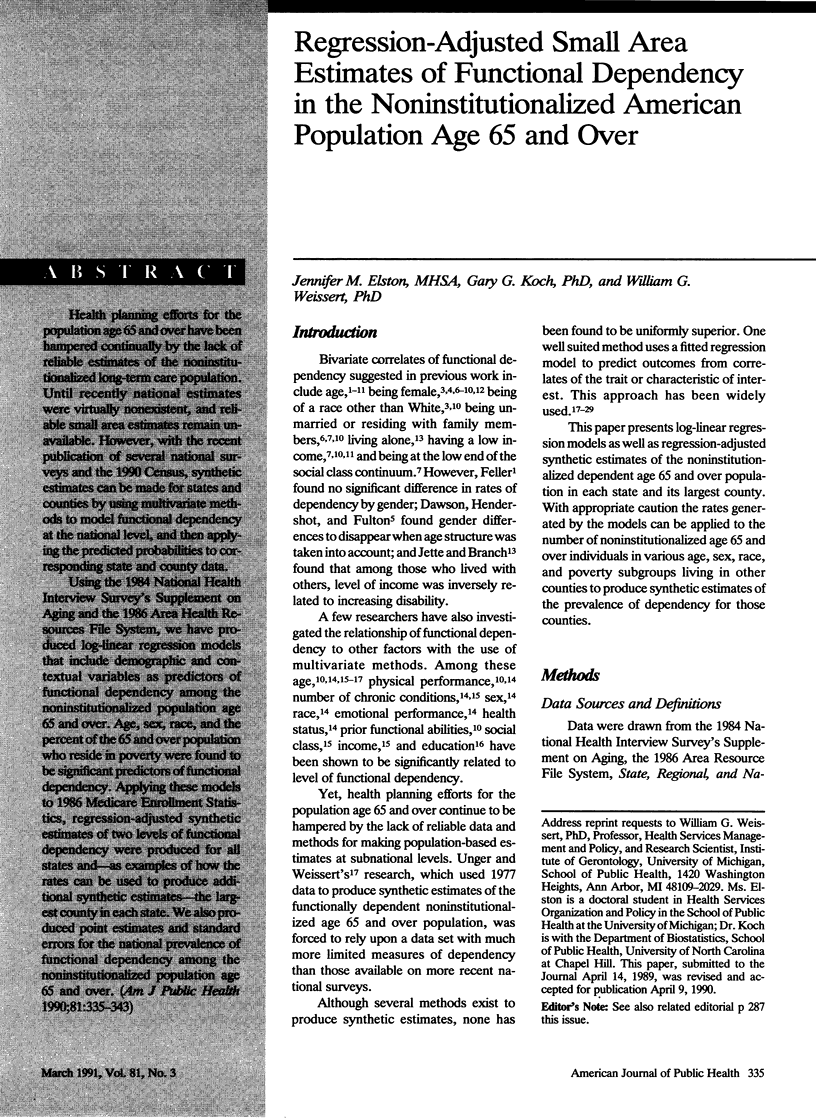

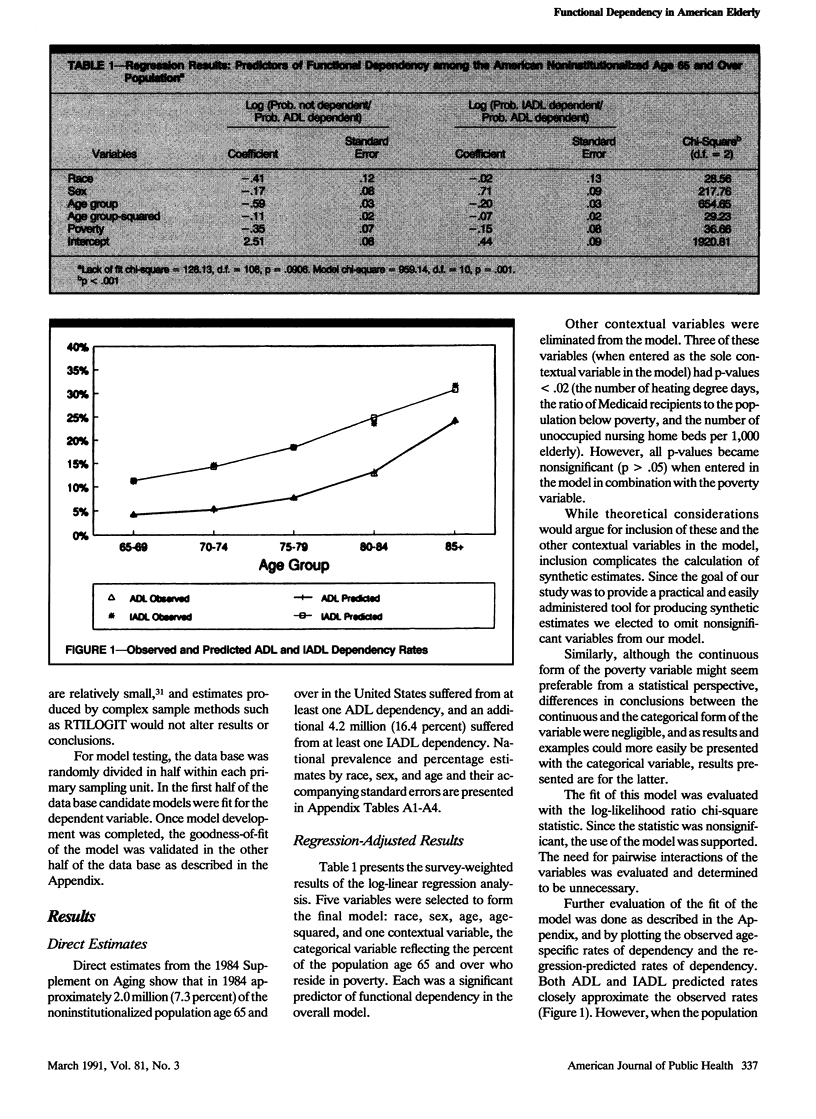
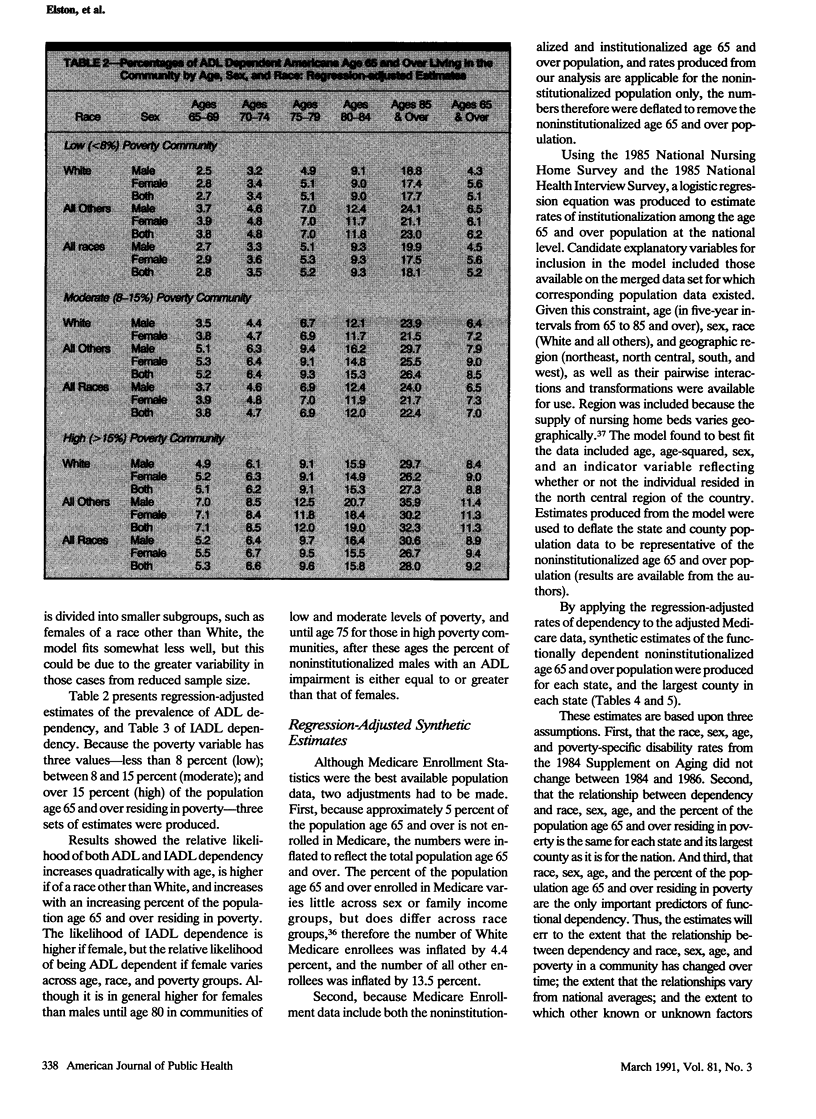
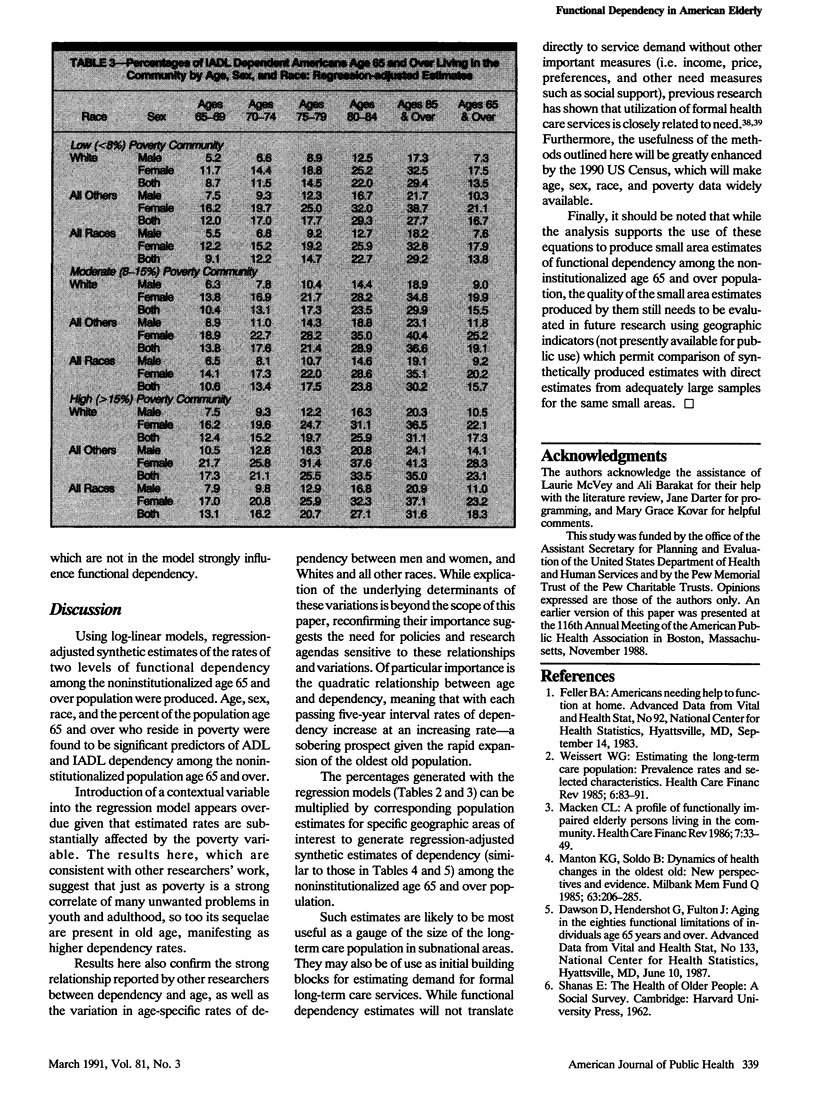
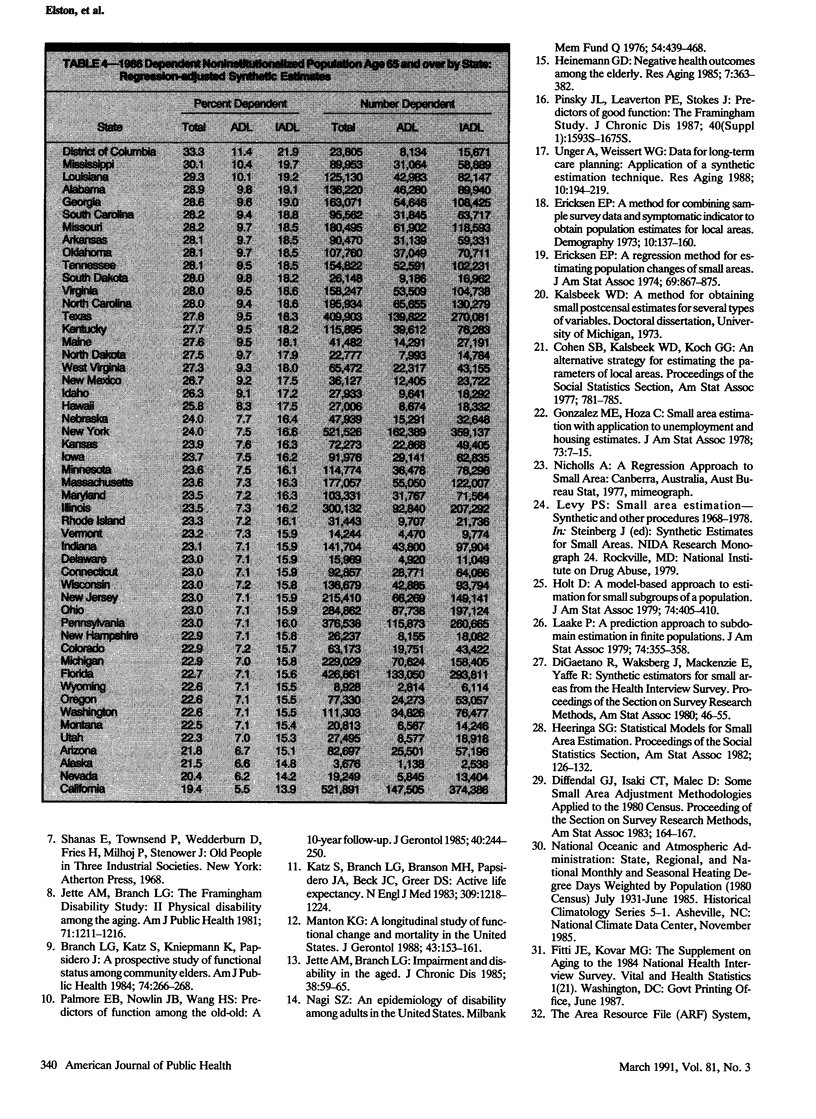
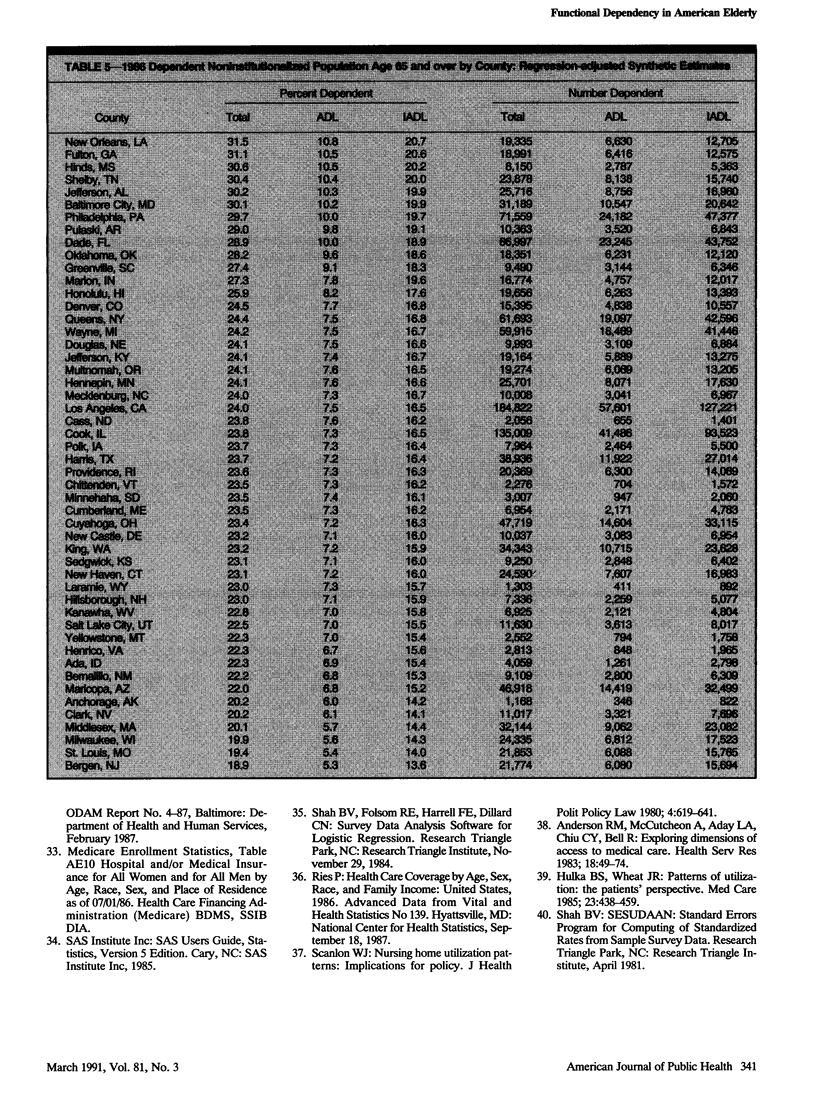
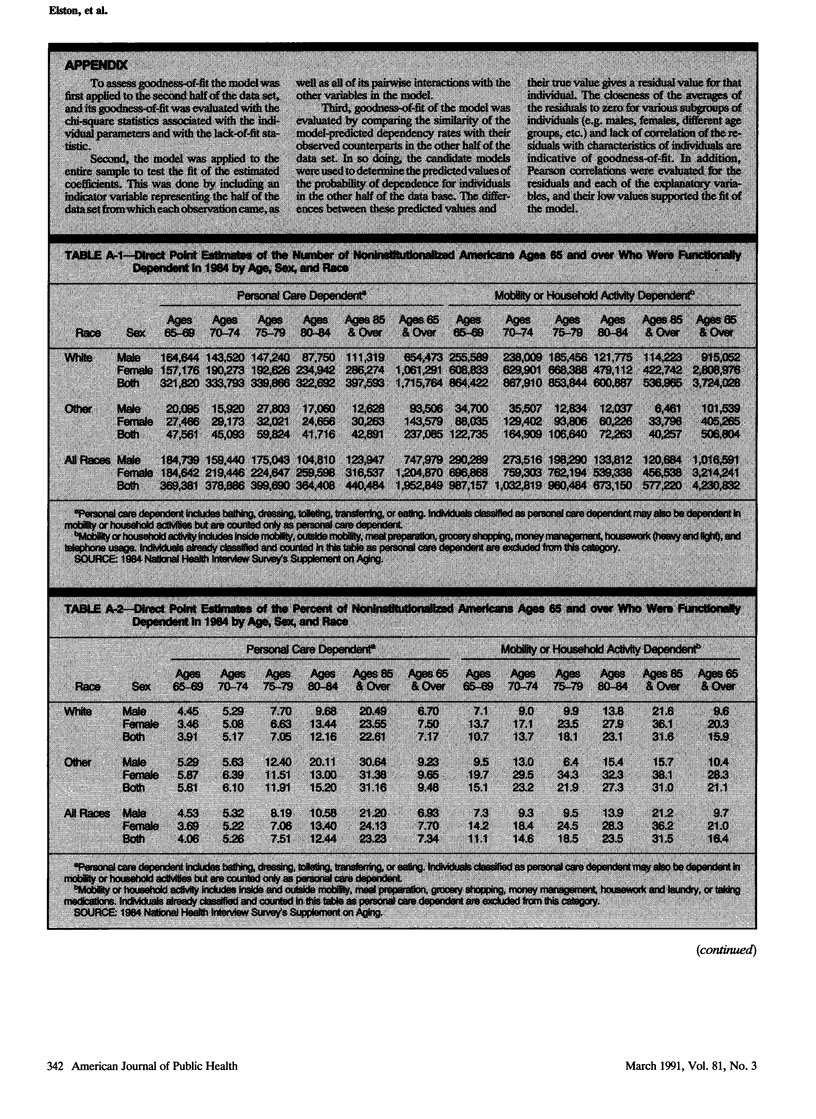
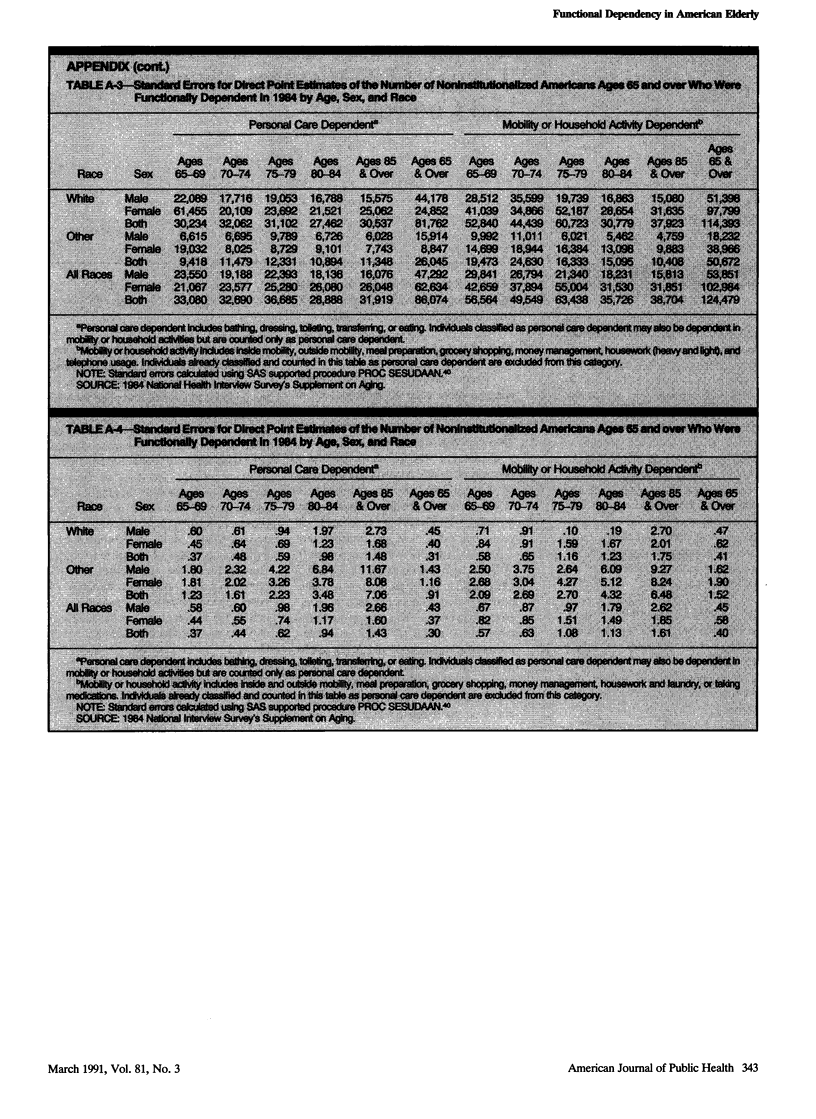
Selected References
These references are in PubMed. This may not be the complete list of references from this article.
- Andersen R. M., McCutcheon A., Aday L. A., Chiu G. Y., Bell R. Exploring dimensions of access to medical care. Health Serv Res. 1983 Spring;18(1):49–74. [PMC free article] [PubMed] [Google Scholar]
- Branch L. G., Katz S., Kniepmann K., Papsidero J. A. A prospective study of functional status among community elders. Am J Public Health. 1984 Mar;74(3):266–268. doi: 10.2105/ajph.74.3.266. [DOI] [PMC free article] [PubMed] [Google Scholar]
- Ericksen E. P. A method for combining sample survey data and symptomatic indicators to obtain population estimates for local areas. Demography. 1973 May;10(2):137–160. [PubMed] [Google Scholar]
- Heinemann G. D. Negative health outcomes among the elderly. Predictors and profiles. Res Aging. 1985 Sep;7(3):363–382. doi: 10.1177/0164027585007003003. [DOI] [PubMed] [Google Scholar]
- Holt D., Smith Tmf, Tomberlin T. J. A model-based approach to estimation for small subgroups of a population. J Am Stat Assoc. 1979;74(366 Pt 1):405–410. [PubMed] [Google Scholar]
- Hulka B. S., Wheat J. R. Patterns of utilization. The patient perspective. Med Care. 1985 May;23(5):438–460. doi: 10.1097/00005650-198505000-00009. [DOI] [PubMed] [Google Scholar]
- Jette A. M., Branch L. G. Impairment and disability in the aged. J Chronic Dis. 1985;38(1):59–65. doi: 10.1016/0021-9681(85)90008-6. [DOI] [PubMed] [Google Scholar]
- Jette A. M., Branch L. G. The Framingham Disability Study: II. Physical disability among the aging. Am J Public Health. 1981 Nov;71(11):1211–1216. doi: 10.2105/ajph.71.11.1211. [DOI] [PMC free article] [PubMed] [Google Scholar]
- Katz S., Branch L. G., Branson M. H., Papsidero J. A., Beck J. C., Greer D. S. Active life expectancy. N Engl J Med. 1983 Nov 17;309(20):1218–1224. doi: 10.1056/NEJM198311173092005. [DOI] [PubMed] [Google Scholar]
- Macken C. L. A profile of functionally impaired elderly persons living in the community. Health Care Financ Rev. 1986 Summer;7(4):33–49. [PMC free article] [PubMed] [Google Scholar]
- Manton K. G., Soldo B. J. Dynamics of health changes in the oldest old: new perspectives and evidence. Milbank Mem Fund Q Health Soc. 1985 Spring;63(2):206–285. [PubMed] [Google Scholar]
- Nagi S. Z. An epidemiology of disability among adults in the United States. Milbank Mem Fund Q Health Soc. 1976 Fall;54(4):439–467. [PubMed] [Google Scholar]
- Palmore E. B., Nowlin J. B., Wang H. S. Predictors of function among the old-old: a 10-year follow-up. J Gerontol. 1985 Mar;40(2):244–250. doi: 10.1093/geronj/40.2.244. [DOI] [PubMed] [Google Scholar]
- Scanlon W. J. Nursing home utilization patterns: implications for policy. J Health Polit Policy Law. 1980 Winter;4(4):619–641. doi: 10.1215/03616878-4-4-619. [DOI] [PubMed] [Google Scholar]
- Unger A., Weissert W. G. Data for long-term care planning. Application of a synthetic estimation technique. Res Aging. 1988 Jun;10(2):194–219. doi: 10.1177/0164027588102003. [DOI] [PubMed] [Google Scholar]
- Weissert W. G. Estimating the long-term care population: prevalence rates and selected characteristics. Health Care Financ Rev. 1985 Summer;6(4):83–91. [PMC free article] [PubMed] [Google Scholar]


